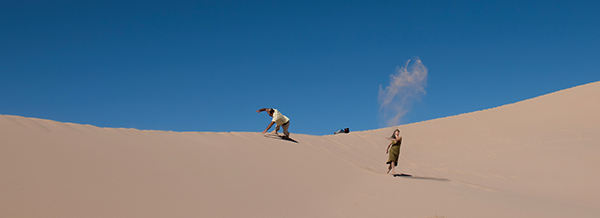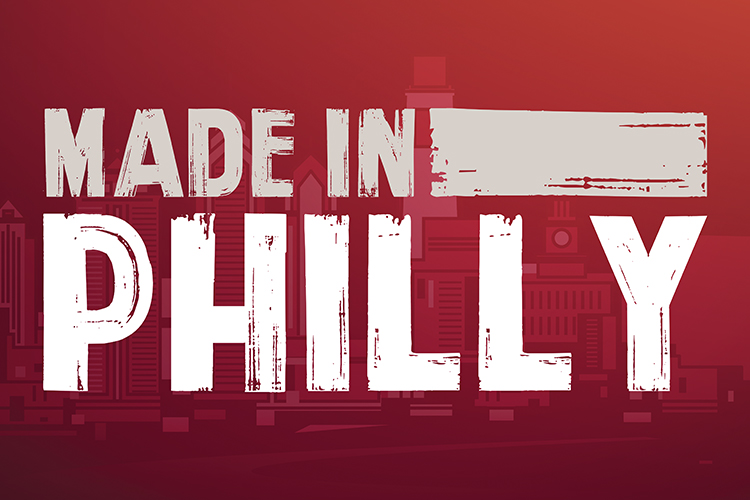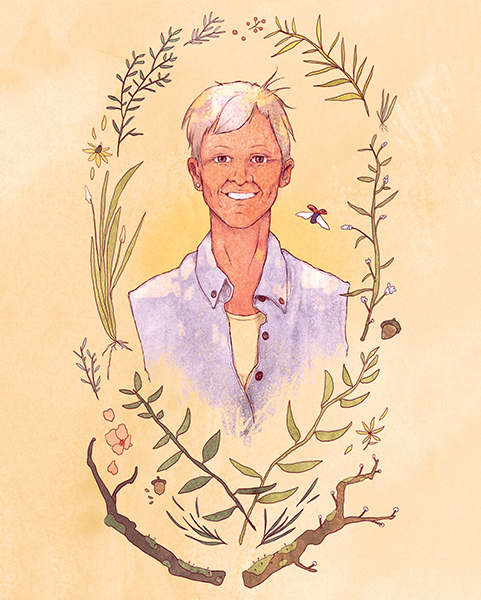Photo courtesy of Lars Jan
Alone, Together
interview by Heather Shayne Blakeslee
In “Paradise Lost,” John Milton’s epic poem about the fall of man, he envisions the mythical city of Pandæmonium as the capital of hell, a mansion built on a lake of fire by the demon Mulciber.
For Philadelphia choreographer and dancer Nichole Canuso, co-performer Geoff Sobelle and director Lars Jan, it’s the place they’ve chosen to explore for a multimedia dance performance of the same name.
In order to ground what the producers have a called a “cinematic dance-theater concert” in an actual place, they filmed scenes in the Mojave Desert, a sprawling entity in the Southwestern United States that has no respect for geo-political boundaries: Its blazing heat and dry landscapes stretch over California, Nevada, Utah and Arizona. They cite the “burnt-out telephone lines, empty swimming pools and unfinished suburban developments” in the area as a Pandæmonium of our own making.
Canuso gave Grid some insight as to why the piece is so relevant to our current environmental and political crises.
What in particular about the desert landscape drew you to the idea of two people being together, but also separate?
NC: In addition to thinking about two people being simultaneously together and apart, we’re also curious about the ways one can feel very far from certain aspects of their own self. For instance, the experience or sensation conjured in an open landscape—like the desert—can be difficult to access or interact with when you return to life in a crowded environment.
Using technology, in this case video that merges the performances of two separate dancers into an onscreen duet, is an interesting choice considering that all of our screens and devices usually serve to alienate us from one another—albeit under the auspices of connecting us.
NC: The audience sees two performers together on the screen but separate in the real space. The screen connection has visual beauty but lacks the energy, volume, density and sweat of the live bodies. The ability to watch both of those very different versions of the interaction makes palpable the loss inherent in the digital duet. It shines a light on what is missing in that screen, and speaks more to divisions than connections.
What was it like filming in the desert this past July?
NC: It was fantastic and definitely an essential aspect of the development process. We took two trips. One last year in which Geoff (Sobelle), Lars (Jan) and I camped in the Mojave. This recent trip was more elaborate and involved the whole team: We built a version of our drive-in movie screen (the set for the stage production) out in the middle of the desert. Filming in the desert reoriented the show in a great way, and we are currently rebuilding the work in response to that material.
You said in your interview with the Fringe Festival that Pandæmonium is the moment “you wake up on the other side of a rupture that you cannot repair, a break from reality that you cannot return to: for an individual, a nation or an ecosystem.” When it comes to the rupture of nations, has the unreality or alienating character of this year’s presidential election or other geopolitical events entered your mind at all as you’ve worked on the piece?
NC: Yes, those ruptures and divides are present in our minds and permeate our thinking. Especially the fear-based rhetoric that fuels so much of the conversation.
How does it relate, in your mind, to our current environmental crises?
NC: As a whole we are certainly causing irreversible damage to our environment.There are so many ways that we can flirt with the edge of extreme danger, refusing to acknowledge the potential drop on the other side. It’s like partying right up to the edge of a cliff, with a blindfold on.
Pandæmonium
Nichole Canuso Dance Company
When:
Sept 14-17 • 8 p.m.
Sept 18 • 3 p.m.
Where:
FringeArts
140 N. Columbus Blvd.
Philadelphia, Pa., 19106
Price:
$29











